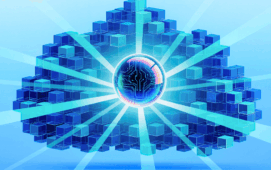
Data siloes are proliferating, data lakes are overflowing, regulators are asking for access to more granular data, and data management teams are looking at how to deal with enormous data volumes in capital markets, understand both structured and unstructured data, make data accessible and contextual for business users, and turn it into a strategic asset.
An emerging and innovative solution with the potential to unify data and solve these data management problems is enterprise knowledge graph technology that can link data from a wide range of sources and provide business insight without moving the data.
Similarly, while traditional data management solutions can be brittle and cause apps to break when new datasets are added, knowledge graph technology has the agility to encompass new and changing data. By discovering and forming links across data silos and other data sources, by way of example, it becomes possible to uncover hidden connections and knowledge.
Use cases
This may sound rather conceptual, but use cases are being implemented in capital markets and are generally focused on fraud detection, regulatory change and compliance, a 360-degree customer view, variations of data lineage, real-time recommendations, and more widely, improving enterprise data management by being able to provide faster responses to data requests and more complete data, as well as reduced time on reporting and compliance.
Providers
Michael Sachse, until recently the CEO of knowledge graph platform provider Stardog and now principal at Newton VC, says most of Stardog’s clients work with the company to build apps that use various data sources such as structured and unstructured data, cloud data and data that is changing rapidly. He comments: “Banks run thousands of databases and no-one knows what is in that volume of databases. Knowledge graph technology can provide access to data without moving or copying the data. It is flexible, a natural way to present data, and more durable and lasting. Its use cases speak to the power of the technology.”
In financial markets, Stardog clients include Bank of New York, National Bank of Canada, National Bank of Lichtenstein and more. Its technology is based on a logical, semantic data model and includes database connectors to all major SQL systems and the most popular NoSQL databases. The company has also built BITES, a pipeline to process unstructured data like research papers and regulatory documents This uses natural language programming (NLP) entity recognition to identify and extract concepts, adding those data relationships into the knowledge graph.
Neo4J has more than 350 enterprise customers, the majority in financial services and including names such as Citi Private Bank, which uses the Neo4J platform for client onboarding and to support a 360-degree customer view, UBS and ING. It provides a free open source knowledge graph model as well as a more fully featured enterprise edition.
Chief marketing officer Lance Walter says knowledge graph technology allows banks to achieve things they cannot do with legacy systems, such as providing performance and connectivity at scale.
The company’s technology is based on Resource Description Framework (RDF) semantic web standards and, like other solutions, can cascade questions by allowing a minimum of data to be accessed to answer a question such as ‘what is your pain point’ and then move on to related questions such as ‘how much money is needed to fix the pain point’. “You don’t need to boil the ocean, this is just one sprint,” says Walter. “You can show results very quickly and go to the business person who can sign the cheque to solve the problem. People want to see value quickly, knowledge graphs are a feasible solution here.”
Other vendors in the market include Siren, a specialist in investigative intelligence. While the company serves a number of sectors, capital markets participants’ use of Siren’s knowledge graph and visualisation solution is increasing. CEO John Randles suggests use cases such as trade surveillance, perhaps looking for wash trades, and the ability to look at events such as transactions and trades to identify what is happening today and what happened in the past.
While elements of the technology have been around for some years, Siren is seeing a surge in interest as all the pieces of the puzzle come together. Randles says: “Knowledge graphs are very good at managing huge volumes of data and narrowing it down to what is relevant and important to the business.”
The company’s knowledge graph software sits on top of data wherever it resides and includes NLP, entity resolution and most recently artificial intelligence (AI), which it says has significantly improved entity resolution. It takes into account the context of user needs when making investigations and provides alerts, avoiding the need for continual investigations.
A relative newcomer to the market is Agnos.ai that is initially providing consultancy and services to help companies build knowledge graphs and apps. Its approach is based on semantic web standards. Jeremy Posner, principal consultant at Agnos.ai, says: “This is a mature set of technologies that is deeply rooted in internet communications and is freely available with lots of tools around the semantic stack.” Agnos – meaning agnostic – means it doesn’t matter where the data is or who owns it when building knowledge graphs with open standards and semantic tools that deliver data and context.
Looking forward
Posner concludes: “The knowledge graph space is enormous and growing quickly in terms of understanding, use cases and benefits.” With mammoth organisations such as Google, Amazon Web Services, LinkedIn and Microsoft using knowledge graph technology internally and also beginning to over solutions externally, such as AWS Neptune and Microsoft Azure Cosmos, he is most probably right, along with the many other vendors in the market.
We’ll be coming back to knowledge graph technology soon to look at data solutions that feed the platforms noted in this article, so watch this space!
Subscribe to our newsletter




